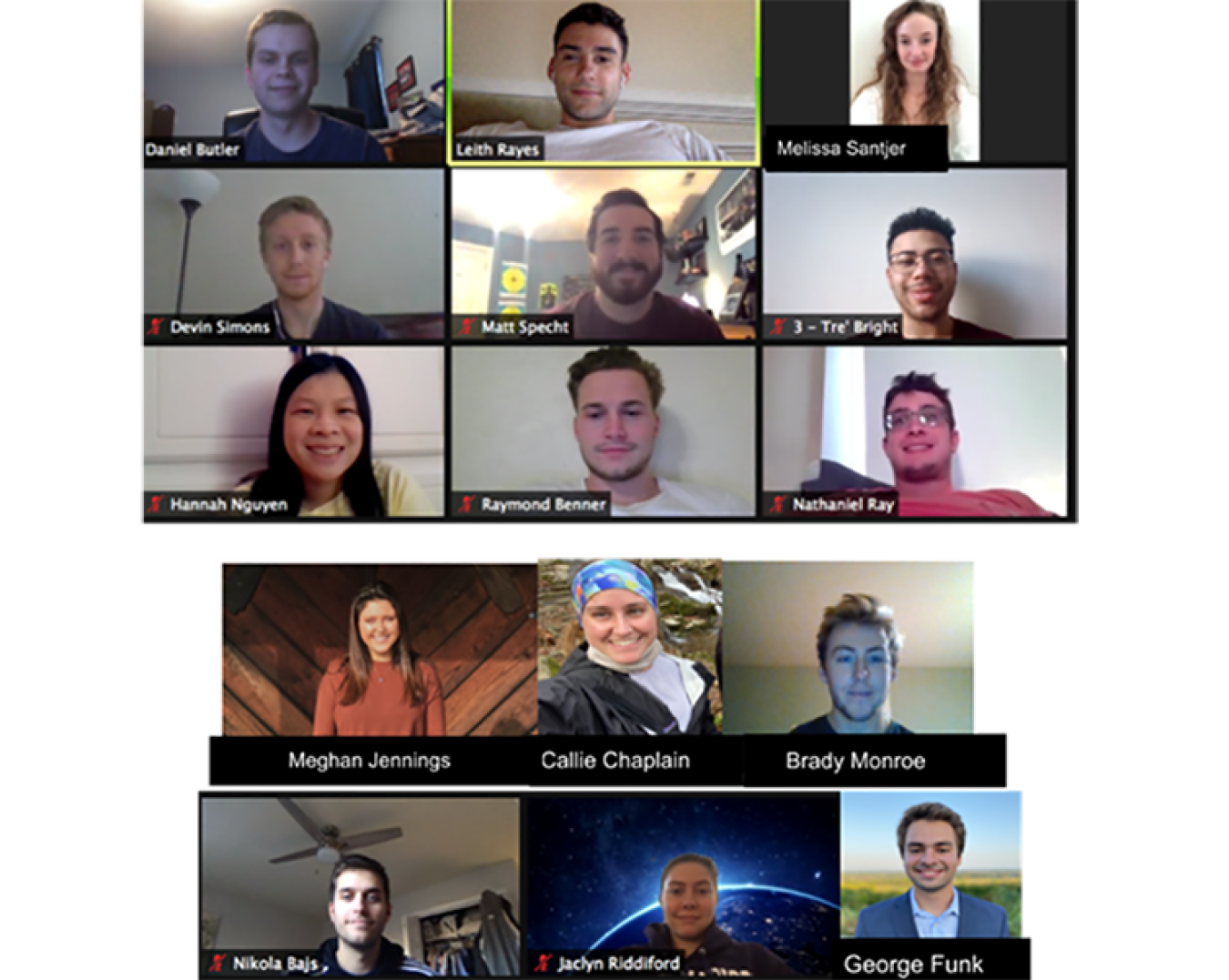Team Name:
Dukes Clean Energy
James Madison University, Harrisonburg, Virginia
Why this Competition?
Dukes Clean Energy—named for our school’s mascot, the Duke Dog—is proud to represent James Madison University once again at the U.S. Department of Energy (DOE) Collegiate Wind Competition. The team is participating in this competition to gain real-world industry experience, expand our knowledge, and prepare to enter the wind energy workforce. We would like to thank the DOE and the National Renewable Energy Laboratory for providing this opportunity.
Game Plan
The turbine prototype team will research, design, and fabricate a small-scale prototype wind turbine that is safe and reliable during a time of high uncertainty. This turbine will produce power at both low and high wind speeds, self-regulate at various wind speeds to optimize safety, and maintain structural integrity during high-wind-speed conditions. The turbine prototype team has organized into multiple subsystems, including electronics; coding; and blade, structural, mechanical, and generator design to distribute efforts among the entire wind turbine system. Each team member takes a lead role in the efforts for their subsystem, working closely with the project advisor and other experts who help the team navigate wind power’s steep learning curve.

Dukes Clean Energy
The project development team will create a plan for a theoretical utility-scale (100-megawatt) wind farm in western South Dakota.
To do this, the project development team will identify a suitable wind resource, pick a turbine model, establish points of interconnection, identify usable land, establish relevant political and social stakeholders, assess the environment, mitigate environmental risks, develop a risk management plan, iterate the design of the wind farm, and determine a financial offtake strategy.
Students from the project development team, and the turbine prototype team, are working together to reach out to industry leaders and educate the community about wind energy for the new Connection Creation Contest.
To keep the team on track and ensure the project is developing in a timely manner, we will adhere to a Gantt chart showing specific tasks throughout the semester.
Team Strengths
Team strengths include having an advisor to consult with, access to multiple labs and machine spaces, and a team of individuals who are eager to learn about wind power are notable team strengths. Furthermore, while we all have areas of expertise that we excel at individually, team members complement each other’s skills in different majors. The project development team includes students across two different majors: Integrated Science and Technology and Architectural Design. In this interdisciplinary major, we each develop unique skill sets and learn holistic problem solving, which we will apply to the competition. Finally, all members of Dukes Clean Energy team have a strong commitment to persevering through the end of the project.
Team Hurdles
We have faced many challenges this past semester, including the coronavirus pandemic, which has prevented us from meeting in person and restricted our access to lab space. To address these challenges, the turbine prototype team has identified distributed manufacturing options and alternative designs to ensure our prototype is ready for the competition. To help us stay connected, we have created Slack channels, a GroupMe, and a Trello board to ask questions and keep everyone informed about each subsystem’s progress.
Competition Objectives
Dukes Clean Energy wants to uphold James Madison University’s reputation as a strong competitor in the Collegiate Wind Competition and as a university that educates students in clean energy, as this will create opportunities for future students. We also hope to gain valuable experience that will help us become part of the growing wind industry.
Follow Us
Facebook: jmucwc | @jamesmadisonuniversity
Instagram: @jmucwc | @jamesmadisonuniversity
LinkedIn: James Madison University
Twitter: @jmu
This content was submitted to the U.S. Department of Energy by the team.

